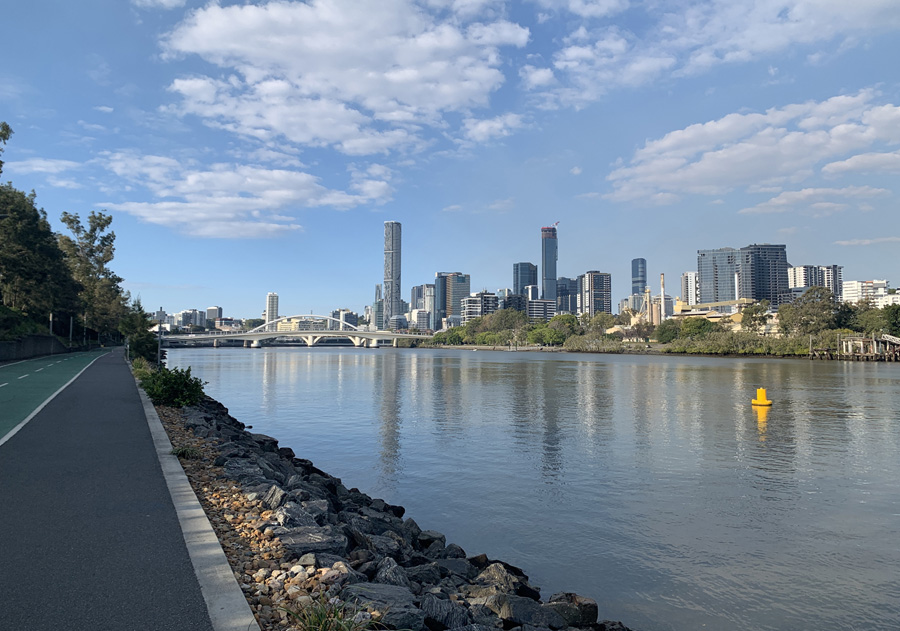Breaking News Today – The Brisbane River


The Brisbane River is one of the major waterways in Australia, and before it was developed for navigation purposes, it was a beautiful natural attraction. Its natural beauty was enhanced by abundant fish and vegetation. However, this beautiful river had to undergo changes. For example, in 1862, the river was dredged to serve as a carriageway between Brisbane and Ipswich. After the river was dredged, a number of bridges were built over it to accommodate the growing traffic on the Brisbane River.
The Brisbane River is an estuary, which means that the water in the river is affected by tides. When this happens, sediments are stirred up and never have the opportunity to settle. The city of Brisbane has undergone significant changes since its colonial days. During this time, the Brisbane River has experienced numerous floods. In addition, the Brisbane River’s water quality has failed to meet government standards. Several tests conducted in the mid-section of the river show nitrogen and phosphorus levels exceeding the maximum limit. The rivers are affected by the nitrogen and phosphorus inputs from the agricultural areas upstream.
The Brisbane River peaked at 3.85m on Monday. It is expected to peak at 3.7m by 9am on Tuesday. At the moment, eight people have died in flooding caused by the river. Three people remain missing. On Monday morning, a man and his dog were killed when their car was swept away by floodwaters in the Currumbin Valley. Police were called to the scene after reports of trouble in the water at 3am. It was later discovered that the car had been driven as far into the floodwaters as possible.
The riverside of Brisbane is gentrified compared to the south. It is populated by the capital city, as well as commercial headquarters. A few ‘villa’ estates stretch eastwards from the north central area. They house the captains of industry and the leaders of government. It is not hard to imagine how the river might have changed the city. This change of attitude has paved the way for more riverfront development.
The Brisbane River was important to Aboriginal people. Their lives were affected by the river, including access to food and participation in traditional laws. In 1823, four convicts were sailing south from Sydney on a timber-getting mission. The convicts landed on Moreton Island and trekked north to the mainland south of Brisbane River. After a decade of convictism, Brisbane was granted free status. The Leslie brothers’ settlement in 1840 made it a free settlement.
Dredging has affected the Brisbane River in a number of ways. First, the dredging of mud from the Bay resulted in increased siltation. Second, the dredging of coral from the Bay was a major source of sediment in the river. Thirdly, runoff from hard surfaces in the city caused the river to appear browner than it did before. This process increased the depth of the river and reduced its flow.
Oxley’s 1825 map of the Brisbane River contained descriptions of the landscape’s economic potential. In particular, he saw the potential for developing timber plantations in the region. He also noted that the area had rich flats and land near South Brisbane, Chelmer, and Moggill. Additionally, he noticed a riverine floodplain with useful stands of timber. Despite these findings, the Brisbane River is still heavily polluted, but it poses little risk to drinking water supplies.
Apart from the riverside bikeways, there are also numerous parks along the Brisbane River. You can also enjoy the Teneriffe Boardwalk and other restaurants on the riverbank. The river offers a lot of recreational opportunities, but it is always advisable to stay vigilant. Be careful and do not attempt to swim in the river. The river has a reputation for shark activity, so you need to take care to stay safe.
The Brisbane River is a major waterway in Australia. It originates in the Brisbane Range, and has several tributaries, including the Stanley River in the city of Maleny, Cooyar Creek near Cooyar, and the Bremer River near Ipswich. Further, it flows through the western suburbs of Brisbane. The water falls from Mount Langley, 868 m above sea level. The river flows through the Port of Brisbane, the Bulwer Island, and Luggage Point before emptying into southern Bramble Bay.
The Brisbane River was originally named for the Governor of New South Wales, Sir Thomas Brisbane. Various explorers and builders later explored the area and constructed various bridges across the river. The Moreton Bay penal colony was relocated to the North Quay in May 1825. After Gray surveyed the Brisbane River entrance, he transferred convicts and soldiers from Redcliffe to Brisbane. In addition, the Moreton Bay bridge is located at the mouth of the river.



